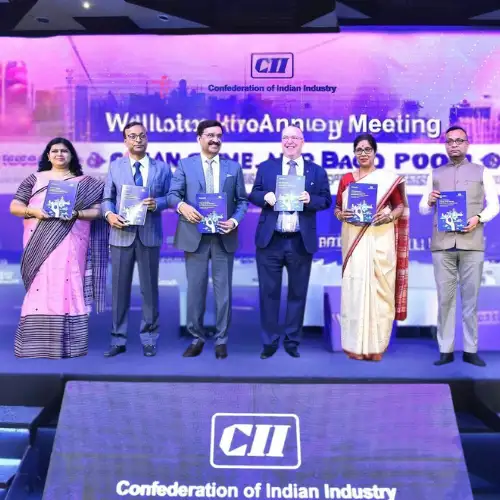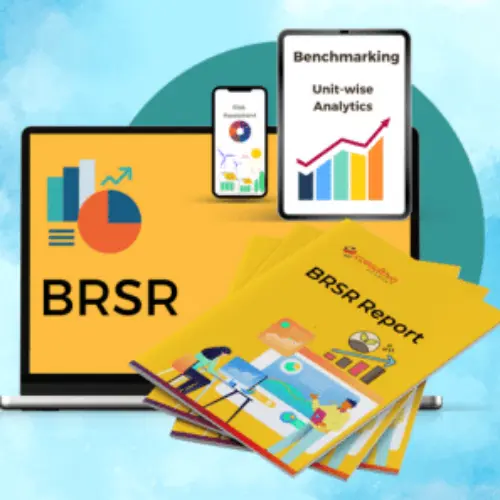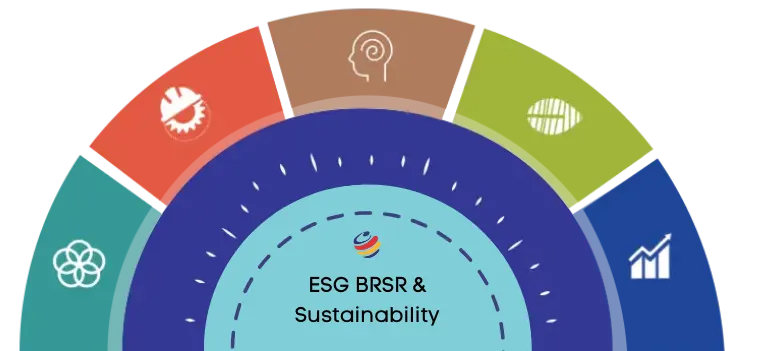Sustainable lifestyle is no more a choice for us. The surging awareness for environmental issues is demanding an urgent move. Let’s take the first step by getting rid of the everyday products which are causing harm to the environment.
Without knowing much, we continue using substances like preservatives in washing and cleaning agents, fragrances in personal care products, per- and polyfluorinated chemicals used in textile finishing, plasticizers in plastic materials or heavy metals in textile finishing products among others. These are the hazardous substances which we are using as regular ingredients in daily life. There is an urgent need to promote a sustainable lifestyle and create environmental awareness.
The typical end-user makes use of a lot of items without being aware of the harmful chemical constituents present in the product which might have an adverse effect on the user and the environment.
Stay tuned for the Environmental Excellence Awards 2025 edition!
Looking Ahead: Join the Next Cohort
Missed the 2024 awards? Prepare now for the 19th ICC Environment Excellence Awards 2025 to showcase your organisation’s next phase of environmental excellence.
How can we make a change and switch to a sustainable lifestyle?
When we talk about sustainable living or eco-living, the first point of action starts with our way of life. It’s a habit. It’s a practice. Get started with a sustainable lifestyle by avoiding these everyday products which are harmful to the environment. Making the first move is the most essential point here.
As proven risk communication networks cover only part of society, daily goods can contain a multitude of hazardous substances unnoticed by the majority of consumers.
The problem can be solved by creating awareness in the customers about risk communication tools and taking precautionary measures. They also need to determine the hazardous chemicals in goods and reduce their negative impact on themselves and the environment. Thus, we need to promote sustainable living.
Avoid these everyday products for a sustainable lifestyle
Micro beads
Found in: face washes, toothpaste, body scrubs, abrasive cleaners
These small pieces of plastic since they are so minuscule can quickly pass through water filtration systems and end up in the sea, at great risk to our marine life. 100,000 plastic particles entering the ocean will result in a single shower.
Wet wipes
Plastics for singular use
Plastic is everywhere, from plastic cutlery to water bottles, bags and food packaging. And, unless it is burned, somewhere on our planet, any piece ever made still remains-ensuring that up to 12.7 million tonnes of stuff end up in the ocean every year.
Antibacterial soaps and gels
It’s not as essential to destroy 99.9% of all germs as we’ve been led to believe. The use of antibacterial hand gels causes the growth of ‘super-bugs’ resistant to antibiotics as well as interferes with the development of the immune system in children. Several studies have shown that being safe is safer than being germ-free. There are usually stronger immune systems for those exposed to any amount of germs than for those who grow up in overly sanitised environments.
Phosphate-containing Detergents
These are only a few ways in which we unknowingly harm the environment. This creates a need for environmental awareness so as to develop eco-living.
Here are a few precautionary measures that can be taken for developing a sustainable lifestyle:
Switch to Clean Beauty
Clean beauty means that a beauty product should take into account human and environmental health, using a non-toxic factor as the basis for active results and plant-based ingredients. It is a great way to induce sustainable lifestyle while taking care of you too. It offers all the vitamins and antioxidants essential for safe and radiant skin and hair.
The two most important points are for a product to be safe:
1.Ingredients that are non-toxic
Clean beauty at its centre means you can use a product without compromising your well-being. Only healthy, non-toxic ingredients have to be on the list of ingredients. Clinique goods boast being free of parabens and fragrances. And they continue actively to include their products in the study of ingredients. In addition to this, Clinique has a variety of products that can be personalized to suit your unique needs.
2. Transparency in marking
They are on the right road to clean makeup when a makeup manufacturer makes an effort to list all of their ingredients and mark them accordingly. beminimalist.co is a brand for skincare that emphasises transparency by demonstrating the active concentration used and revealing the ingredient’s trade name & supplier. Their medications treat the most common skin disorders, ranging from acne marks to sunspots, in a highly effective and inexpensive way. The products are also free from parabens, fragrances and other toxic ingredients, thus being clean and induce no side-effects.
Since clean beauty products use non-toxic ingredients, they significantly minimise their harmful impact on the environment. Both the body and the environment are spared by the harsh effects of the chemicals.
Clean beauty should not use micro beads, a vital contaminant that impacts the marine life of the ocean.Usually, clean beauty products substitute sugar or sea salt for this harmful ingredient, which does the same exfoliating job but retains the potential to break down over time.
Better still, pure beauty prefers to use organic and recyclable packaging and products which are sustainably and ethically sourced. This means that not only are you doing yourself a favour, but also the world in which you live.
Modify your shopping habits
Sustainable shopping is a misleading term that has been tossed around for years now as a buzzword. Fashion has been the second most polluting industry, behind only oil, so it would make a difference to make some minor improvements to your shopping habits and the way you think about and purchase clothing. Sustainable shopping is not an easy change to make and can become a little confusing, but since it is now a very real, and very dangerous, problem, it is good that it is finally recognised.
Begin by reviewing the facts behind the fashion industry and then look at brands that are taking measures to become more sustainable. Although very few labels are 100% organic, organic and ethical collections are being produced more and more. Researching and shopping online is another tip. Around 22% of the environmental impact of a clothing item comes primarily from the shipping process to and from shops, so online shopping is a perfect way to discover new and exciting products and reduce the environmental impact.
Reduce usage of Plastic and Wet wipes:
Wet wipes:
Wipes should not be flushed down the loo, since they do not dissolve in water the way paper does, and should preferably be the last choice when it comes to washing your face or cleaning the house.
Given that so much food comes wrapped in it, it is hard to eschew all plastic, but minor changes such as taking your bags to the supermarket or shopping at local farm shops might make a huge difference. In a few easy steps, you can start cutting down on the plastic waste: use reusable bags while shopping, ditch single-use bottles of water, bags, and straws and avoid items made or packaged in plastic wherever possible (e.g. use unwrapped products at the grocery store, local shop, cut down online shopping).
Avoid bottled water. Tap water is often regarded inferior even after having passed quality tests and being free to use. And it is notoriously detrimental to communities and wildlife to harvest water and manufacture all those plastic bottles. Conservation of water is also important, especially as our increasing population brings increased pressure on the water supplies of the nation and we face unprecedented droughts. By taking shorter showers, repairing leaky toilets, and preferring low-flow and low-water appliance options, you can save water and have sustainable living.
Explore our environmental soutions
1. Environmental Risk, Compliance & Reporting
- Environmental & Legal Compliance Audits
- ISO 14001: EMS
- Due Diligence & Governance (EDD/ESG)
- Environmental Reporting
- Green Audit
2. Climate & Energy Solutions
3. Water & Resource Management
- Water Sustainability Solutions
- Pollution, Waste & Circular Economy

Let's discuss
About Consultivo Environmental and ESG Services
Consultivo specialises in comprehensive Environmental Services, and ESG Services, including Environmental Audits, Environmental Due Diligence, Carbon Management, and Energy Management & Audits. We support ISO 14001 implementation, Water Sustainability, and Green Audits for truly sustainable operations.
About Consultivo:
Consultivo is a leading ESG Consultant in India, serving as an Advisory, Research, Audit & Training organisation for global businesses. We specialise in Sustainability, Business Excellence, and Risk Management across strategic and operational levels.
Key service verticals include Safety, ESG & Sustainability, Community, Social & CSR, Environment & Energy, HR & Human Rights in Business Information & Cyber Security and Management Systems.
As a premier ESG Consultant, we offer comprehensive services from ESG Materiality Assessment and Strategy Consulting to ESG/BRSR Report Preparation and Independent External Assurance.
Consultivo Academy also provides focused training and capacity building services.
Purpose/objective: To maximise awareness about the environment awards while reinforcing Consultivo’s authority as the Knowledge Partner in the ESG and environmental space.
Share this post
Category: Event
About the author
Lead – Communication, Consultivo
Medha Basu currently serves as the Lead – Communication at Consultivo (www.consultivo.in). In her role, Medha primarily works on communication, engagement, first mile activities and data analytics.
She is having 5+ years of experience in the sustainability consulting and advisory sector. As a communication professional, she knows perfectly what it takes for successful communication.
After her studies, Medha started her career with digital engagement and business communications. She picked up the flair of sustainability communication with a diverse exposure with 100+ sustainability solutions
Related insights
View more in Impact Stories | Blogs | Knowledge Bank | News and Events











